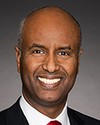Number one, on the issue of the safe third country agreement, it's a bilateral agreement. We have expressed our viewpoint to the United States. Like any other agreement that's almost a decade and a half old, it requires a second look to see how we can modernize it to take advantage of developments that have been made not only in technology but also in information sharing. How can we benefit from the full spirit of the agreement by harnessing those developments?
On the issue of what the government is trying to do, what we're trying to do and what we've effectively done is to make sure that we've learned the lessons from last year. We have a national operations plan in place, which has been tested on the ground with different players.
Number two is that we collaborate to make sure there's an orderly process in place.
Number three is that asylum seekers have come to Canada in the past. The opposition is suggesting or pretending that this is a new phenomenon. It's not. In 2008, under their watch, we had 30,000 asylum seekers.
The fact of the matter is that we have laws in place to deal with this. Our system is working. The IRB has invested to make sure there are an additional 64 decision-makers and more than 185 staff to further speed up the decision-making process so that Canada can continue to meet its obligations. Despite the rhetoric and fearmongering by the opposition, we remain committed to making sure that we have a place in our hearts and our immigration system for those who are seeking protection. We will not let fearmongering and divisive politics deter us from standing up for the rights of asylum seekers to claim asylum.
That being said, it's part of our law to make sure that if you have no claim for asylum in Canada, you're removed.

